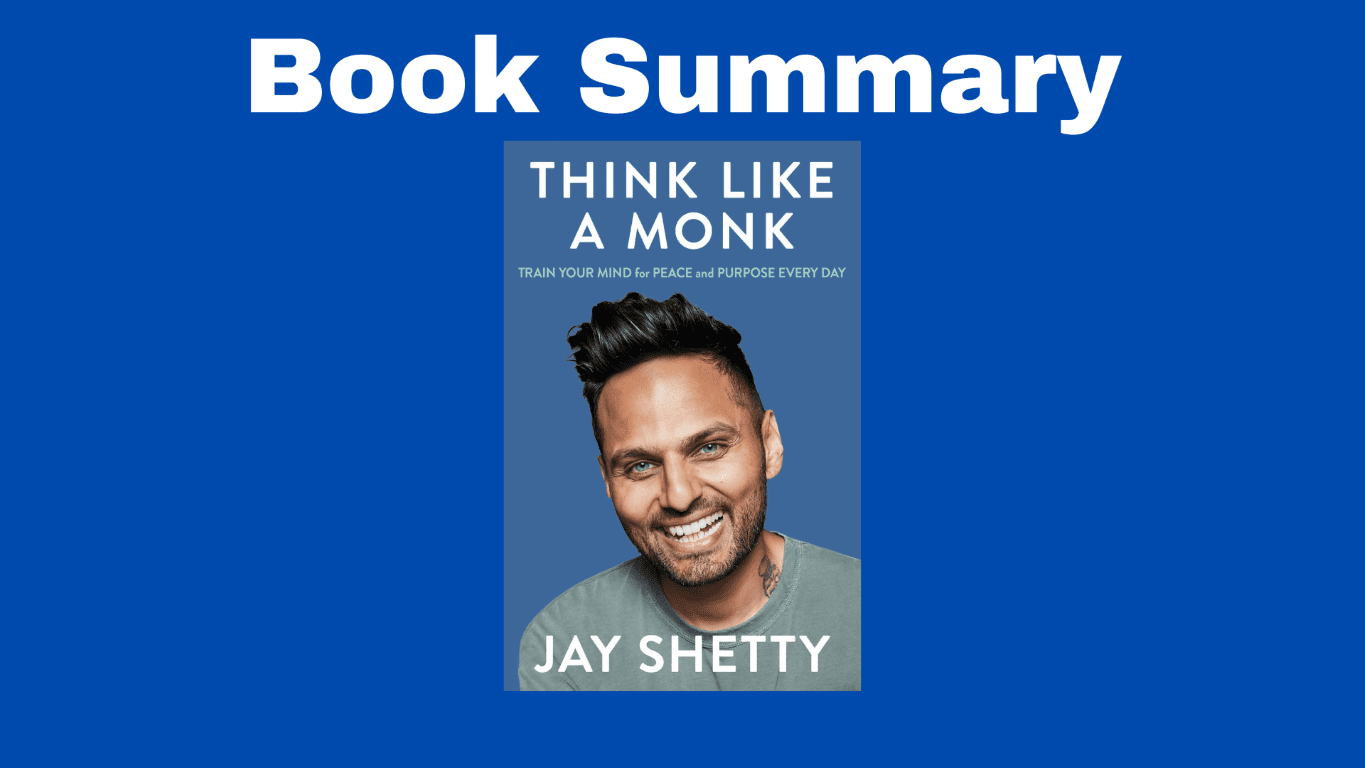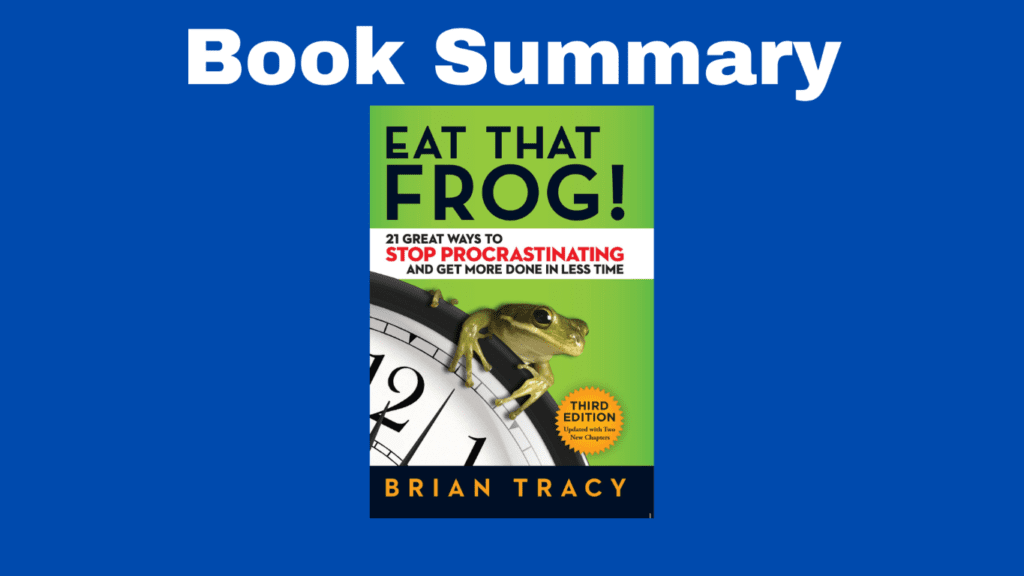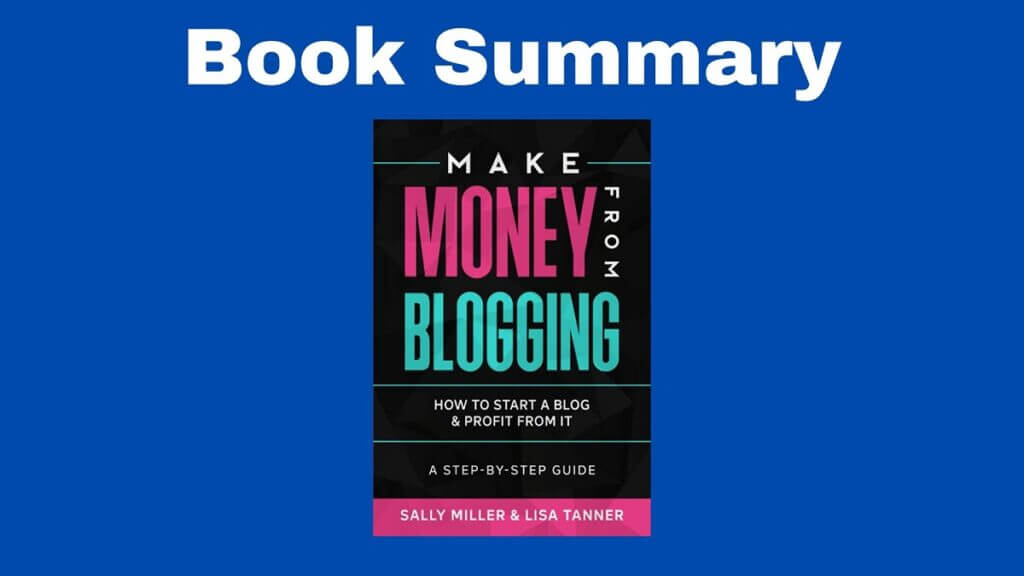The Book in Three Sentences
In this summary of Think Like a Monk, Jay Shetty shares the lessons he learned in a monk retreat and turns them into practical steps anyone can take. The exercises focus on reducing stress, improving relationships, and giving. Ultimately, the teachings from this book aim to help you lead a less anxious life.
Think Like a Monk Summary
Part One: Let Go
Chapter One: Identity
To build a meaningful life, filter out the noise and look within.
Where do your values come from? From your parents, from the media? Do those values feel right to you? As an exercise, start thinking about the values that feel true to you and get rid of the ones that don’t.
Remove distractions. Your actions reveal what your values really are.
- Time: Think about what you do with your time when you’re not sleeping or working.
- Media: Limit yourself when it comes to media.
- Money: What do you spend your money on other than the essentials? Are you spending on what matters most to you? Be more conscious when it comes to your expenses.
Whenever you spend money or time on an activity, value-driven decisions encourage you to pause and think. You ask yourself: What’s the value behind that choice? Eventually, this practice becomes a habit and you start making conscious choices.
You should filter opinions, expectations, and obligations to see the world differently, but don’t block them. The people you surround yourself with should help you achieve your goals. Give the most time to the people that align with your values.
Chapter Two: Negativity
There are three cancers of the mind:
- Comparing
- Complaining
- Criticizing
Negativity is everywhere, but that doesn’t mean you should adopt a victim mentality.
Negativity is also contagious, so the more negativity around us, the more negative we are.
Types of negative people:
- Complainers
- Cancellers
- Casualties
- Critics
- Commanders
- Competitors
- Controllers
To deal with negative people you should:
- Become an observer and remove yourself from the moment.
- Back away or distance yourself.
- The 25/75 principle says that for every negative person in your life, you should have three positive people.
- Regulate the amount of time you spend with a negative person according to the energy you have.
- Listen, but don’t become a problem-solver, especially if you don’t have a solution.
In order to deal with our own negative thoughts, the author suggests to Spot, Stop, and Swap.
- Spot: Bring awareness to the fact that we’re having a negative thought.
- Stop: Address the feeling.
- Swap: Change our behavior, so we find a new way of processing the negative thoughts and turn them into positive ones.
Chapter Three: Fear
We’ve been taught that fear is a negative feeling, but it can be a great tool to reach our potential. Fear can motivate us, but if we let it, it can also limit us. The cause of fear is attachment and the cure for fear is detachment, so don’t cling to temporary things because everything is borrowed.
Chapter Four: Intention
There are four motivators that drive everything we do:
- Fear: It can be a motivating factor, but the problem with fear is that it’s not sustainable. Operating by fear all the time limits us since we are unable to take action or we can’t think objectively.
- Desire: With desire, we follow personal gratification which often translates into material goals. But success isn’t the same as happiness. Happiness doesn’t come from external success, it comes from within.
- Duty
- Love: Unlike fear and desire, both duty and love provide joy and meaning. In other words, they give you purpose.
The author also introduces the idea of the “Why Ladder”. Essentially, this is an exercise that lets you reach the deepest why behind a want. This is how it works: let’s say you started a blog to summarize books and discuss productivity. You’d ask why until you reach an answer that shows your true motivations. In the case of the aforementioned example, the person wishing to start a blog does it because he wants people to like him. That person is motivated by fear. But if the person is doing it because he wants to share what he knows and give value to people’s lives, his or her motivations are love and duty. So we have to be aware of our intentions.
Remember that after the why comes the work. Focus on the process rather than the outcome.
“I wish” means you want to do things the way you’ve been doing them so far.
Part Two: Grow
Chapter 5: Purpose
The concept of dharma is introduced which is a “calling”. According to the author, “Living in your dharma is a certain route to fulfillment.” The formula for dharma is the following:
Passion + Expertise + Usefulness = Dharma
To find our dharma, we have to know our passions. To do that, we can use the Quadrants of Potential which looks something like this:
Quadrants of Potential
Skill but no passion | Skill and passion |
No skill and passion | No skill but passion |
The ideal way of living would be to focus both time and energy to move to quadrant two. In other words, we should try to find something we are good at and that we love.
Chapter Six: Routine
You should wake up early and gently. Your morning routine should have thankfulness, insight, meditation, and exercise. Regarding your evening routine, author Jay Shetty says that “The emotion you fall asleep with at night is most likely the emotion you’ll wake up with in the morning”, so the last thoughts you consider before falling asleep should be positive ones.
Although we stick to a routine, that doesn’t mean being on autopilot. Try to find something you haven’t noticed before in your everyday life. Also, don’t train your mind to be somewhere else. Be present to have a more meaningful life.
Don’t multitask, single-task instead.
Chapter Seven: The Mind
Beware of self-destructing thoughts. Our minds can play against us sometimes, but we are not our minds. The author proposes the presence of two different minds: one that’s impulsive like a child and one that’s judicious like an adult. There’s an inner battle between both minds and we must learn to find a balance between the two.
Don’t be in default mode. Be conscious because if we let our unconscious mind take over, we’re allowing its negative messages to go through which impact our lives and prevent us from reaching our full potential. If the self-defeating messages still happen try to reframe, slow down, find self-compassion, stay present, and realize that nothing owns you.
Chapter Eight: Ego
Be modest and humble. By believing we know everything, we can’t learn. Self-confidence comes from ego. There are two kinds of egos: the real one and the false one. Real ego is our presence. False ego is an identity we created for ourselves to look more important. If we let our ego run wild, we present ourselves to the world as the best, someone different than we really are. This comes from our insecurities, we tell ourselves and everyone willing to listen that we are special, so this persona we created for ourselves is dishonest. To know your true self, remember that “You are who you are when no one is watching.”
The “cure” to ego is humility, so start practicing it. Humility is recognizing that we have weaknesses and accepting that we can be better.
Instead of building ego, we should be building confidence. To achieve the latter, be more humble.
Part III: Give
Chapter Nine: Gratitude
Be aware of gratitude. It has many health benefits and it lets you be present. The more gratitude you have, the better you feel, so try to make gratitude part of your routine. Once you start expressing gratitude internally, project that towards others. Be kind to others, both people you know, as well as complete strangers. Consider volunteering to be of service to people you don’t know. Although sometimes it’s difficult to express gratitude towards the people who we care about the most, you should show them appreciation whenever possible. Show them gratitude in ways you think they are going to appreciate the most. You should also show gratitude towards people that we have mixed feelings about. Some relationships are complex, but you should try to be forgiving even if it’s difficult.
Chapter Ten: Relationships
Shetty identifies four types of trust. You trust someone’s competence because they have the right skills, you trust someone’s care because they care about you, you trust someone with character because of their strong values and finally, you trust in someone’s consistency because they’re available to you when you need them. By knowing the four types of trust, ask yourself your intentions when you’re involved in any kind of relationship.
Although there are several people in our lives, we don’t trust all of them in the same way. The author recognized four stages of trust. Neutral trust recognizes that there are positive traits, but that doesn’t guarantee trust. Contractual trust is when we implicitly expect something from the other person and we know they are going to do it. Mutual trust is when we do something for another person and we expect they’d do the same for us. Pure trust is knowing that regardless of what happens, the other person is going to be there for you.
The author then moves to romantic relationships. There are five motivations for a romantic connection:
- Physical attraction: You like their appearance
- Material: You like their possessions
- Intellectual: You like the way they think
- Emotional: You connect emotionally
- Spiritual: You share values
By noticing your motivations, you see if you like someone as a whole or just a part. Long-term relationships are based on emotional and spiritual motivations. Even if you have the first three, you’re likely to have a weak, short-term relationship. Having a relationship should be about quality and not quantity.
There are six loving exchanges:
- For gifts: 1) giving with intention and 2) receiving with gratitude
- For conversations: 3) listening with judgment and 4) speaking with vulnerability
- For food 5) preparing without agenda and 6) receiving with presence
To keep love alive over time, the author suggests:
- Find new in the old
- Find new ways to spend time together
- Serve together
- Meditate together
- Envision what you both want from the relationship
When it comes to heartbreak, avoid abusive, manipulative, and toxic relationships. In the author’s words: “In every relationship you have the opportunity to set the level of joy you expect and the level of pain you’ll accept.”
After a breakup:
- Feel every emotion
- Learn from the situation
- Believe in your worth
- Wait before dating again
Chapter Eleven: Service
Be of service to others. Be selfless. Give, not only to people but also to nature.
The benefits of service are that it connects us, amplifies gratitude, increases compassion, and builds self-esteem.
Further Reading
If you liked this summary of Think Like a Monk, you might also like:




